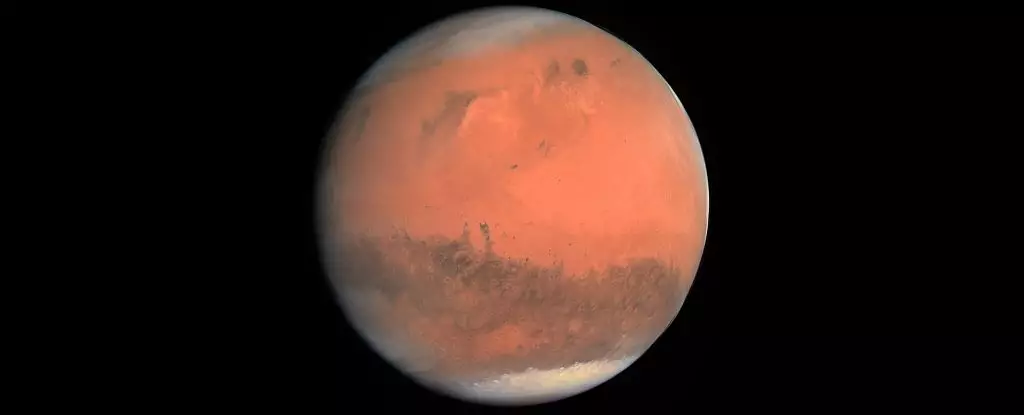Mars, often referred to as the “Red Planet,” harbors a captivating atmosphere shaped by its iconic rusty complexion. This defining characteristic, a hallmark that distinguishes Mars from its cosmic neighbors, has fascinated astronomers and geologists alike. For years, researchers attributed this distinctive red coloration to the oxidation of iron-rich minerals in the Martian soil. However, recent studies suggest that our understanding of the processes that contributed to Mars’ current appearance may require reevaluation.
Current consensus among scientists established that the rusting process responsible for Mars’ hue resulted from the breakdown of iron-containing rocks, similar to the processes observed on Earth. The long-held belief that hematite, a mineral formed in arid conditions, was chiefly responsible for the planet’s redness is now under scrutiny. A new line of inquiry has emerged, advocating that the presence of water played a more significant role in this transformation than previously recognized.
At the heart of this new research is the suggestion that past interpretations may have overemphasized dry conditions. A team of researchers, led by planetary geologist Adomas Valantinas from Brown University, conducted laboratory experiments aiming to recreate Martian dust. Their analysis suggested a dominant role for ferrihydrite, a mineral that forms under conditions involving cool, liquid water, rather than hematite, which forms in arid environments.
Historically, iron oxide minerals have played a crucial role in understanding planetary atmospheres and histories. Mars is known to possess an abundant supply of iron, leading scientists to initially link its reddish hue to iron oxidation through hematite formation. However, this narrative was based on a limited understanding of the Martian environment, exacerbated by evidence from spacecraft that had failed to demonstrate the presence of water on the planet’s surface. This aspect created an assumption that Martian rust could only arise under dry conditions.
Recent investigations, however, have illuminated the possibility of a wetter past on Mars. The current findings challenge the notion that water merely acted as a distant observer in the planet’s geological evolution. Instead, the presence of ferrihydrite, a mineral that can provide critical insights into past aqueous environments, suggests that significant oxidation occurred while water was still present, reshaping the timeline of Mars’ atmospheric and geological history.
To arrive at these conclusions, Valantinas and his team scrupulously analyzed data collected by various orbiting spacecraft and a meteorite linked to Mars. They compared these findings with measurements gathered from multiple Mars rovers, creating a rich tapestry of geological evidence that points to ferrihydrite as an important mineral for understanding the rusting process.
Employing advanced grinding techniques to simulate the fine dust observed on Mars, they compared the oxidized iron mineral samples under the same conditions used to study Martian dust. Their results indicated that ferrihydrite not only matches the composition of Martian materials but also demonstrates how these minerals could have formed while liquid water was still present.
This breakthrough suggests a paradigm shift in how scientists should view the red planet’s transformation over geological time. The evidence strongly indicates that Mars may have experienced a significant episode of rusting occurring earlier in its history than previously thought. Furthermore, if ferrihydrite is stable under current Martian conditions, it implies not just a past presence of water, but also a connection to the planet’s ongoing geochemical processes.
As we await samples from Mars to arrive on Earth for more detailed analysis, it is clear that our understanding is still evolving. The significance of these findings stretches beyond the mere identification of minerals; rather, they invite us to deeply reconsider the conditions that prevailed on Mars and their implications for the history of water on the planet. As research progresses, we hope that a clearer picture of Mars’ enigmatic nature will emerge, unlocking potential secrets to its geological past and the underlying processes that continue to shape it today.


Leave a Reply